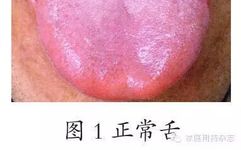Click above“Family Medicine Magazine”Follow us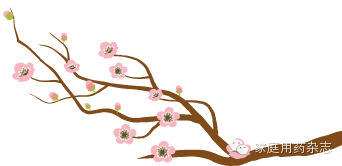 Author: Zhu Kangmei Position: Chief Physician of Internal Medicine, Shuguang Hospital Affiliated to Shanghai University of Traditional Chinese MedicineIntroduction: This article is the fourth in the series on “Fundamentals of Tongue Diagnosis in Traditional Chinese Medicine“. Through previous introductions, we have learned about the causes of abnormal tongue sensations (1), how tongue coating forms and its diagnostic significance (2), and how to observe tongue appearances (3). In this issue, we will continue to introduce what a normal tongue appearance looks like and how to observe different tongue qualities with the help of illustrations. (Click the blue text above to jump to the corresponding article)Normal Tongue Appearance
Author: Zhu Kangmei Position: Chief Physician of Internal Medicine, Shuguang Hospital Affiliated to Shanghai University of Traditional Chinese MedicineIntroduction: This article is the fourth in the series on “Fundamentals of Tongue Diagnosis in Traditional Chinese Medicine“. Through previous introductions, we have learned about the causes of abnormal tongue sensations (1), how tongue coating forms and its diagnostic significance (2), and how to observe tongue appearances (3). In this issue, we will continue to introduce what a normal tongue appearance looks like and how to observe different tongue qualities with the help of illustrations. (Click the blue text above to jump to the corresponding article)Normal Tongue Appearance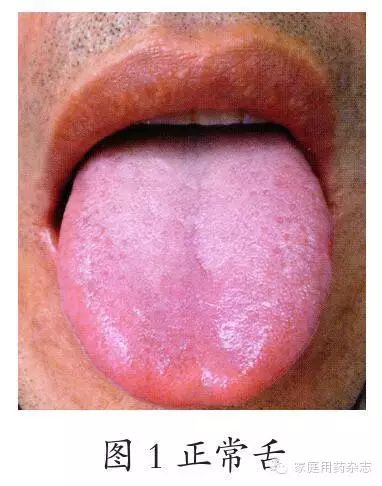 Tongue Color The color is pale red, bright, and moist; the tongue coating is thin white, with a granular texture that is evenly distributed, moderately dry and wet, neither slippery nor dry; through the thin tongue coating, the pale red tongue body can be faintly seen, with slightly thicker coating at the root of the tongue (see Figure 1). The normal tongue appearance can be summarized as “Pale Red Tongue, Thin White Coating“, reflecting the functional state of the internal organs, indicating that Qi, blood, and body fluids are abundant, and the functions of digestion, metabolism, and circulation are in a coordinated and balanced state.Tongue Body Flat, neither thick nor thin, of moderate size, with a longitudinal crack visible in the center of the tongue, known as the “median groove of the tongue”. The tongue body shows no signs of redness, swelling, teeth marks, thinness, atrophy, shortening, or other abnormalities, is soft and flexible, and can move freely without stiffness, deviation, shortening, trembling, or protruding. The sides of the tongue show no red spots or purple bruises. The color of the sublingual veins is dark red, without cyanosis, evenly colored, and the vein shape is soft, without distension, constriction, or curvature, and no purple-black spots, with a diameter generally between 1-2.5 mm, mostly in two parallel lines, with very few individuals having one or four lines. Influencing Factors The normal tongue appearance can also be affected by age, dietary habits, physiological changes, and seasonal variations: ① For example, the tongue quality of elderly individuals may be dry and thin, with a darker purple color; ② Children may have a pale tongue color and tender tongue quality; ③ Long-term smokers often have a dry yellow tongue coating; ④ In hot and humid seasons, normal individuals may also exhibit a thin, slightly yellow tongue coating; ⑤ Women may see more pronounced red spots at the tip of the tongue 1-2 days before or after menstruation, which will naturally diminish after menstruation. These are all normal variations of tongue appearance.Sublingual Veins
Tongue Color The color is pale red, bright, and moist; the tongue coating is thin white, with a granular texture that is evenly distributed, moderately dry and wet, neither slippery nor dry; through the thin tongue coating, the pale red tongue body can be faintly seen, with slightly thicker coating at the root of the tongue (see Figure 1). The normal tongue appearance can be summarized as “Pale Red Tongue, Thin White Coating“, reflecting the functional state of the internal organs, indicating that Qi, blood, and body fluids are abundant, and the functions of digestion, metabolism, and circulation are in a coordinated and balanced state.Tongue Body Flat, neither thick nor thin, of moderate size, with a longitudinal crack visible in the center of the tongue, known as the “median groove of the tongue”. The tongue body shows no signs of redness, swelling, teeth marks, thinness, atrophy, shortening, or other abnormalities, is soft and flexible, and can move freely without stiffness, deviation, shortening, trembling, or protruding. The sides of the tongue show no red spots or purple bruises. The color of the sublingual veins is dark red, without cyanosis, evenly colored, and the vein shape is soft, without distension, constriction, or curvature, and no purple-black spots, with a diameter generally between 1-2.5 mm, mostly in two parallel lines, with very few individuals having one or four lines. Influencing Factors The normal tongue appearance can also be affected by age, dietary habits, physiological changes, and seasonal variations: ① For example, the tongue quality of elderly individuals may be dry and thin, with a darker purple color; ② Children may have a pale tongue color and tender tongue quality; ③ Long-term smokers often have a dry yellow tongue coating; ④ In hot and humid seasons, normal individuals may also exhibit a thin, slightly yellow tongue coating; ⑤ Women may see more pronounced red spots at the tip of the tongue 1-2 days before or after menstruation, which will naturally diminish after menstruation. These are all normal variations of tongue appearance.Sublingual Veins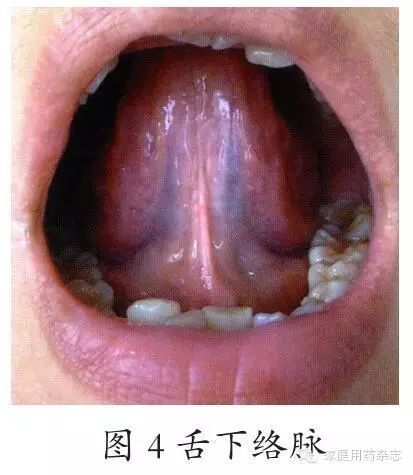 Under the tongue, the veins on both sides of the frenulum are pale purple, and the normal length of the sublingual veins generally does not exceed 3/5 of the distance from the tip of the tongue to the tongue root, with the main trunk diameter generally not exceeding 2.7 mm. The surrounding small veins are covered with mucosa, generally pale red, and arranged in a net-like cross distribution. There are no sublingual veins at the lower part of the tongue tip.The length and thickness of the sublingual veins are within normal ranges, without distension, shortness, varicosity, or abnormal fullness; the color is pale purple, with no signs of dark red, crimson, cyanosis, or purple-black; the small sublingual veins are of normal color, with no dark red or purplish net-like distribution, indicating that the examined individual has harmonious Qi and blood, with no blood stasis, meaning that the cardiovascular function is good and circulation is normal.
Under the tongue, the veins on both sides of the frenulum are pale purple, and the normal length of the sublingual veins generally does not exceed 3/5 of the distance from the tip of the tongue to the tongue root, with the main trunk diameter generally not exceeding 2.7 mm. The surrounding small veins are covered with mucosa, generally pale red, and arranged in a net-like cross distribution. There are no sublingual veins at the lower part of the tongue tip.The length and thickness of the sublingual veins are within normal ranges, without distension, shortness, varicosity, or abnormal fullness; the color is pale purple, with no signs of dark red, crimson, cyanosis, or purple-black; the small sublingual veins are of normal color, with no dark red or purplish net-like distribution, indicating that the examined individual has harmonious Qi and blood, with no blood stasis, meaning that the cardiovascular function is good and circulation is normal. Different Tongue Qualities Next, we will introduce how to observe different tongue qualities:Pale White Tongue
Different Tongue Qualities Next, we will introduce how to observe different tongue qualities:Pale White Tongue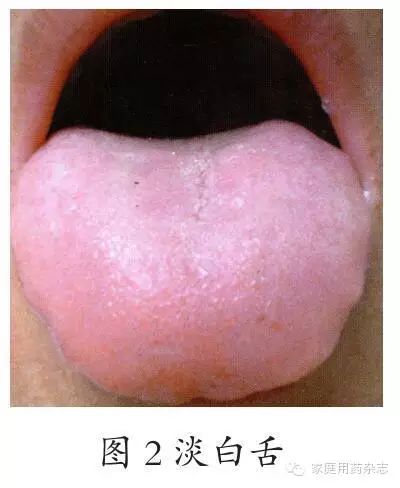 A pale white tongue (see Figure 2) generally indicates a deficiency syndrome, including insufficient Qi and blood and Yang deficiency. Insufficient Qi and blood cannot nourish the internal organs and fail to enhance the tongue surface, hence the pale white tongue color. Symptoms may include shortness of breath, low voice, fatigue, dizziness, pale or sallow complexion, and pale lips. Female patients may also experience reduced menstrual flow, late menstruation, or even amenorrhea.【Causes】The main causes of a pale white tongue are primarily due to insufficient Qi and blood. Factors leading to insufficient Qi and blood may include: 1. Prolonged illness, severe illness, or excessive fatigue, which depletes Qi and damages blood. 2. Congenital deficiency, malnutrition, impaired spleen and stomach function, and absorption disorders, leading to insufficient Qi and blood production. 3. Significant blood loss in a short period without adequate replenishment. 4. Qi deficiency affects the function of promoting blood circulation, leading to Qi and blood stagnation, obstructing blood flow, and causing difficulties in the generation of new blood. The Qi deficiency in those with a pale white tongue is mostly Yang deficiency. Yang deficiency leads to weak warming and movement, preventing blood from nourishing the tongue surface; Yang deficiency with cold condensation causes Qi and blood to stagnate, reducing blood flow to the tongue, resulting in a pale white tongue. Additionally, Yang deficiency may be accompanied by symptoms such as cold intolerance, cold extremities, bland taste, loose stools, and pale complexion.【Clinical Significance】 Generally, a pale white tongue is commonly seen in various types of anemia, severe malnutrition, and chronic diseases of the digestive, respiratory, and cardiovascular systems.
A pale white tongue (see Figure 2) generally indicates a deficiency syndrome, including insufficient Qi and blood and Yang deficiency. Insufficient Qi and blood cannot nourish the internal organs and fail to enhance the tongue surface, hence the pale white tongue color. Symptoms may include shortness of breath, low voice, fatigue, dizziness, pale or sallow complexion, and pale lips. Female patients may also experience reduced menstrual flow, late menstruation, or even amenorrhea.【Causes】The main causes of a pale white tongue are primarily due to insufficient Qi and blood. Factors leading to insufficient Qi and blood may include: 1. Prolonged illness, severe illness, or excessive fatigue, which depletes Qi and damages blood. 2. Congenital deficiency, malnutrition, impaired spleen and stomach function, and absorption disorders, leading to insufficient Qi and blood production. 3. Significant blood loss in a short period without adequate replenishment. 4. Qi deficiency affects the function of promoting blood circulation, leading to Qi and blood stagnation, obstructing blood flow, and causing difficulties in the generation of new blood. The Qi deficiency in those with a pale white tongue is mostly Yang deficiency. Yang deficiency leads to weak warming and movement, preventing blood from nourishing the tongue surface; Yang deficiency with cold condensation causes Qi and blood to stagnate, reducing blood flow to the tongue, resulting in a pale white tongue. Additionally, Yang deficiency may be accompanied by symptoms such as cold intolerance, cold extremities, bland taste, loose stools, and pale complexion.【Clinical Significance】 Generally, a pale white tongue is commonly seen in various types of anemia, severe malnutrition, and chronic diseases of the digestive, respiratory, and cardiovascular systems. Pale Red Tongue
Pale Red Tongue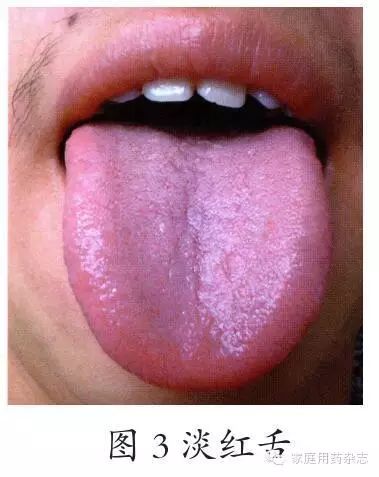 A pale red tongue (see Figure 3) is a manifestation of harmonious Qi and blood. Modern medicine believes that the normal tongue color is determined by the number and morphology of capillaries in the stratum corneum, the structure and function of the vascular walls, the state of the lingual papillae, and the microcirculation of the tongue. A pale red and vibrant tongue color indicates normal blood circulation in the body, unaffected by other factors, with normal microcirculation and adequate blood filling in the capillaries of the lingual papillae. Additionally, the levels of red blood cells, hemoglobin, and blood oxygen saturation are all normal. The distribution of fungiform and filiform papillae is normal, and the number of open capillaries within the fungiform papillae is normal, with the structure and arrangement of the epithelial cells in each layer of the tongue, especially the thickness of the stratum corneum, being normal. All these factors contribute to the appearance of a normal pale red tongue.【Clinical Significance】 Traditional Chinese Medicine believes that the appearance of a pale red tongue indicates good organ function, healthy spleen and stomach, abundant righteous Qi, and balanced Qi, blood, and body fluids, reflected in the tongue as a pale red and moist color.
A pale red tongue (see Figure 3) is a manifestation of harmonious Qi and blood. Modern medicine believes that the normal tongue color is determined by the number and morphology of capillaries in the stratum corneum, the structure and function of the vascular walls, the state of the lingual papillae, and the microcirculation of the tongue. A pale red and vibrant tongue color indicates normal blood circulation in the body, unaffected by other factors, with normal microcirculation and adequate blood filling in the capillaries of the lingual papillae. Additionally, the levels of red blood cells, hemoglobin, and blood oxygen saturation are all normal. The distribution of fungiform and filiform papillae is normal, and the number of open capillaries within the fungiform papillae is normal, with the structure and arrangement of the epithelial cells in each layer of the tongue, especially the thickness of the stratum corneum, being normal. All these factors contribute to the appearance of a normal pale red tongue.【Clinical Significance】 Traditional Chinese Medicine believes that the appearance of a pale red tongue indicates good organ function, healthy spleen and stomach, abundant righteous Qi, and balanced Qi, blood, and body fluids, reflected in the tongue as a pale red and moist color. Common Tongue Appearance in Insomnia Traditional Chinese Medicine considers the common causes of insomnia to be summarized into two aspects: deficiency of the righteous Qi and disturbance by pathogenic factors. Deficiency involves the heart, liver, spleen, stomach, and kidneys, while disturbance is often due to phlegm, heat, or food. Clinical differentiation can be divided into two major categories: excess syndrome and deficiency syndrome. Excess syndrome can be further divided into liver Qi stagnation transforming into fire type and phlegm-heat disturbing type; deficiency syndrome can be divided into yin deficiency with excess fire type, heart and spleen deficiency type, and heart and gallbladder Qi deficiency type. Clinical treatment should be based on the main symptoms combined with tongue and pulse changes for differentiation and treatment. 1.Liver Qi Stagnation Transforming into Fire Type The tongue is red, with yellow or greasy coating; symptoms may include irritability, easy anger, bitter taste, thirst, dry stools, and yellowish urine, mostly indicating liver Qi stagnation transforming into fire type. 2.Phlegm-Heat Disturbing Type The tongue is red or crimson, with yellow greasy coating; symptoms may include loss of appetite, belching, acid reflux, excessive phlegm, dizziness, heaviness in the head, chest tightness, irritability, and bitter taste, mostly indicating phlegm-heat disturbing type. 3.Yin Deficiency with Excess Fire Type The tongue is red, with little or peeled coating; symptoms may include difficulty falling asleep, dizziness, irritability, palpitations, forgetfulness, lower back soreness, nocturnal emissions, and heat in the palms and soles, mostly indicating yin deficiency with excess fire type. 4.Heart and Spleen Deficiency Type The tongue is pale white, with thin white coating; symptoms may include frequent dreams and easy awakening, palpitations, forgetfulness, dizziness, fatigue, loss of appetite, and tastelessness, mostly indicating heart and spleen deficiency type. 5.Heart and Gallbladder Qi Deficiency Type The tongue is pale, with thin white or thin yellow coating; symptoms may include easy awakening, palpitations, fearfulness, and fatigue, mostly indicating heart and gallbladder Qi deficiency type.
Common Tongue Appearance in Insomnia Traditional Chinese Medicine considers the common causes of insomnia to be summarized into two aspects: deficiency of the righteous Qi and disturbance by pathogenic factors. Deficiency involves the heart, liver, spleen, stomach, and kidneys, while disturbance is often due to phlegm, heat, or food. Clinical differentiation can be divided into two major categories: excess syndrome and deficiency syndrome. Excess syndrome can be further divided into liver Qi stagnation transforming into fire type and phlegm-heat disturbing type; deficiency syndrome can be divided into yin deficiency with excess fire type, heart and spleen deficiency type, and heart and gallbladder Qi deficiency type. Clinical treatment should be based on the main symptoms combined with tongue and pulse changes for differentiation and treatment. 1.Liver Qi Stagnation Transforming into Fire Type The tongue is red, with yellow or greasy coating; symptoms may include irritability, easy anger, bitter taste, thirst, dry stools, and yellowish urine, mostly indicating liver Qi stagnation transforming into fire type. 2.Phlegm-Heat Disturbing Type The tongue is red or crimson, with yellow greasy coating; symptoms may include loss of appetite, belching, acid reflux, excessive phlegm, dizziness, heaviness in the head, chest tightness, irritability, and bitter taste, mostly indicating phlegm-heat disturbing type. 3.Yin Deficiency with Excess Fire Type The tongue is red, with little or peeled coating; symptoms may include difficulty falling asleep, dizziness, irritability, palpitations, forgetfulness, lower back soreness, nocturnal emissions, and heat in the palms and soles, mostly indicating yin deficiency with excess fire type. 4.Heart and Spleen Deficiency Type The tongue is pale white, with thin white coating; symptoms may include frequent dreams and easy awakening, palpitations, forgetfulness, dizziness, fatigue, loss of appetite, and tastelessness, mostly indicating heart and spleen deficiency type. 5.Heart and Gallbladder Qi Deficiency Type The tongue is pale, with thin white or thin yellow coating; symptoms may include easy awakening, palpitations, fearfulness, and fatigue, mostly indicating heart and gallbladder Qi deficiency type.
 TipsTips for Taking MedicineHuman taste can generally be divided into five flavors: sour, sweet, bitter, spicy, and salty, while other flavors are combinations of these five. The ability to perceive taste is due to the presence of many taste buds in the oral cavity. Since the distribution of taste receptors is not uniform, different parts of the tongue have varying sensitivities to different flavors.
TipsTips for Taking MedicineHuman taste can generally be divided into five flavors: sour, sweet, bitter, spicy, and salty, while other flavors are combinations of these five. The ability to perceive taste is due to the presence of many taste buds in the oral cavity. Since the distribution of taste receptors is not uniform, different parts of the tongue have varying sensitivities to different flavors. 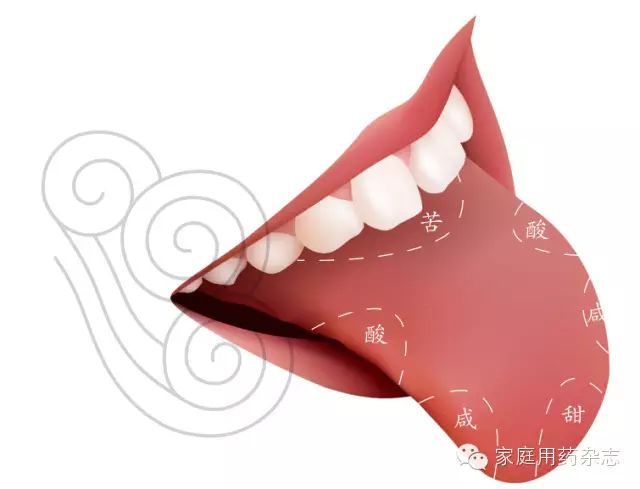 Generally, taste buds that perceive sweetness are more concentrated at the tip of the tongue, making the tip most sensitive to sweetness. Taste buds that perceive sourness are more concentrated on the sides of the tongue. Taste buds that perceive bitterness are mostly located at the root of the tongue, making the root most sensitive to bitterness. Therefore, when taking medicine, avoiding the root of the tongue can reduce the bitterness. The perception of taste is also influenced by the food and its temperature. Generally, the sensitivity to taste is highest between 20-30°C. If the herbal medicine is too bitter, letting the medicine cool before drinking can reduce the bitterness (but note that some medicines must be taken hot and should not be allowed to cool).
Generally, taste buds that perceive sweetness are more concentrated at the tip of the tongue, making the tip most sensitive to sweetness. Taste buds that perceive sourness are more concentrated on the sides of the tongue. Taste buds that perceive bitterness are mostly located at the root of the tongue, making the root most sensitive to bitterness. Therefore, when taking medicine, avoiding the root of the tongue can reduce the bitterness. The perception of taste is also influenced by the food and its temperature. Generally, the sensitivity to taste is highest between 20-30°C. If the herbal medicine is too bitter, letting the medicine cool before drinking can reduce the bitterness (but note that some medicines must be taken hot and should not be allowed to cool). For more exciting articles on “Fundamentals of Tongue Diagnosis in Traditional Chinese Medicine”, please continue to follow the “Family Medicine Magazine” platform for future updates.
For more exciting articles on “Fundamentals of Tongue Diagnosis in Traditional Chinese Medicine”, please continue to follow the “Family Medicine Magazine” platform for future updates.
 This article is an exclusive original article from “Family Medicine Magazine”. For related articles, you can reply with the number below to obtain them. Or click the title below to read directly4308 Is your mouth bland? Sour? Bitter? Are abnormal tongue sensations a disease? The tongue coating is actually like this! What kind of organ is the tongue? Fundamentals of Tongue Diagnosis: How to Observe Tongue Appearance
This article is an exclusive original article from “Family Medicine Magazine”. For related articles, you can reply with the number below to obtain them. Or click the title below to read directly4308 Is your mouth bland? Sour? Bitter? Are abnormal tongue sensations a disease? The tongue coating is actually like this! What kind of organ is the tongue? Fundamentals of Tongue Diagnosis: How to Observe Tongue Appearance
